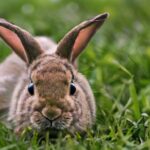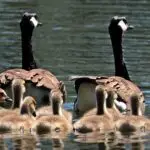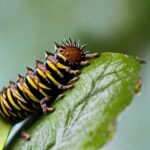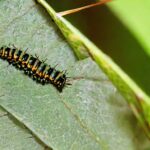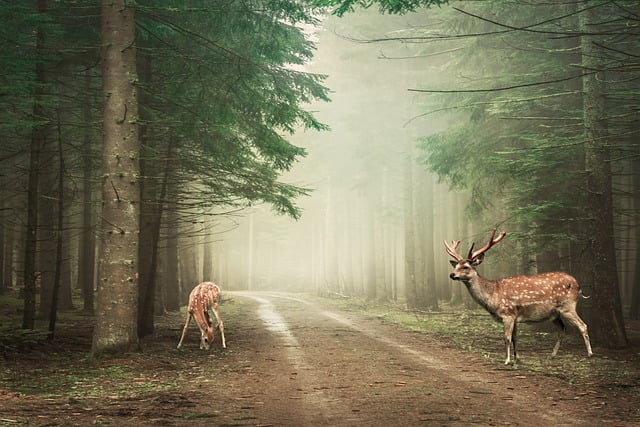
Grass is a vital part of the ecosystem, it is an important food source for many animals living in the forest. From large mammals such as deer and elk to small antelopes like gazelles, these animals have adapted to thrive on a diet of grass and other vegetation.
In this post, we will take a closer look at some of the animals that eat grass in the forest and how they are able to survive on this diet.
Contents
- What are Animals that Eat Grass Called?
- Animals that Eat Grass in the Forest
- Importance of Grass-Eating Animals in the Forest
What are Animals that Eat Grass Called?
In general, animals that eat grass are called graminivores. (See What are Animals that Eat Grass Called?) This is referring to animals that eat mainly grass in their diet. There are many other animals that will also eat grass in addition to many other foods, you can see examples of these at What Animals Eat Grass? and Farm Animals that Eat Grass.
Grass-eating animals are usually herbivore animals. Herbivores are animals that only eat plants or mainly eat plants for their diet. This includes many other plant foods besides grass, such as seeds, nuts, leaves, fruit, and more.
Animals that Eat Grass in the Forest
Here are some examples of the many animals that eat grass in the forest. It is important to note that animals are adaptable, and their diet may vary depending on the availability of grass.
Some examples include:
Deer
Deer are a common sight in many forested areas. They are herbivores and primarily eat grass, leaves, and other vegetation. Since they are herbivores, they have specialized teeth and digestive systems that allow them to efficiently digest tough, fibrous vegetation. In addition to grass, they also eat shrubs, fruits, and tree bark.
Elk
Elk are large, majestic animals that are commonly found in forested areas. They are herbivores and primarily eat grass, leaves, and other vegetation. They have specialized teeth and digestive systems that allow them to efficiently digest tough, fibrous vegetation. They also eat shrubs, berries, and tree bark.
Moose
Moose are the largest members of the deer family and can be found in many forested areas. They are herbivores and primarily eat grass, leaves, and other vegetation. They have specialized teeth and digestive systems that allow them to efficiently digest tough, fibrous vegetation. They also eat aquatic plants, shrubs, and tree bark.
Bison
Bison are large, shaggy animals that are commonly found in forested areas. They are herbivores and primarily eat grass, leaves, and other vegetation. They have specialized teeth and digestive systems that allow them to efficiently digest tough, fibrous vegetation. They also eat shrubs, berries, and tree bark.
Wild Horses
Wild horses are found in many forested areas and they are herbivores that primarily eat grass, leaves, and other vegetation. They have specialized teeth and digestive systems that allow them to efficiently digest tough, fibrous vegetation. They also eat shrubs, berries, and tree bark.
Gazelles
Gazelles are small, graceful antelopes that are commonly found in forested areas. They are herbivores and primarily eat grass, leaves, and other vegetation. They have specialized teeth and digestive systems that allow them to efficiently digest tough, fibrous vegetation. They also eat shrubs, berries, and tree bark.
Giraffes
Giraffes are tall, long-necked animals that are commonly found in forested areas. They are herbivores and primarily eat grass, leaves, and other vegetation. They also eat shrubs, berries, and tree bark.
Warthogs
Warthogs are wild pigs that are commonly found in forested areas. They are omnivores, but grass and other vegetation make up a significant portion of their diet. They also eat fruits, roots, and insects.
Capybaras
Capybaras are large, aquatic rodents that are commonly found in forested areas. They are herbivores and primarily eat grass, leaves, and other vegetation. They also eat aquatic plants, fruits, and roots.
Forest Elephants
Forest elephants are a subspecies of the African elephant that is found in the forested areas of Central and West Africa. They are herbivores and primarily eat grass, leaves, and other vegetation. They also eat fruits, roots, and tree bark.
Importance of Grass-Eating Animals in the Forest
It is also important to note that the consumption of grass by these animals plays a crucial role in shaping the forest landscape. By grazing on grass and other vegetation, they help to control the growth and spread of certain plant species, allowing for a diverse array of plants to thrive. This in turn supports a wide range of other organisms, including insects, birds, and small mammals.
Furthermore, many of the animals that eat grass in the forest are keystone species, meaning their presence and behavior have a disproportionate effect on their ecosystem. For example, the grazing of elephants and other large mammals helps to create open spaces in the forest, which in turn promotes the growth of new plants and supports a diverse array of other organisms.
However, it’s not only the animals that benefit from the grass, but also the grass itself which is vital for the maintenance of the forest ecosystem. The decomposition of dead grass by microorganisms and insects contributes to the formation of fertile soil, and the presence of grass also helps to prevent soil erosion.
In conclusion, the animals that eat grass in the forest play a vital role in maintaining the delicate balance of the ecosystem. Their presence helps to control the growth and spread of certain plant species, and their grazing behavior plays a crucial role in shaping the forest landscape. However, their numbers are often affected by human activities such as habitat destruction, poaching and hunting, and their conservation is important to protect the biodiversity of the forest.
Lance has been passionate about the plant-based diet and we have been following a whole food plant-based diet for over 5 years. We focus on health, natural healing, weight management, animal rights, and the health of the planet and environment by focusing on whole plant-based foods and sustainable practices.
Learn more at the About Me page and follow on social media at the links below.

